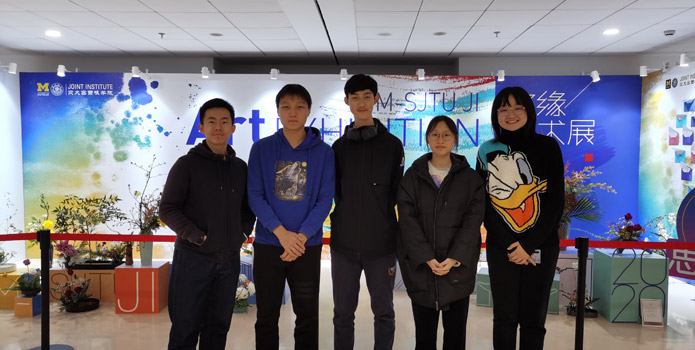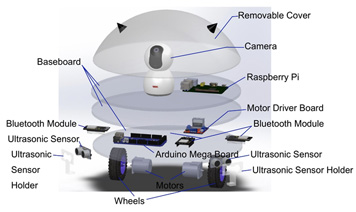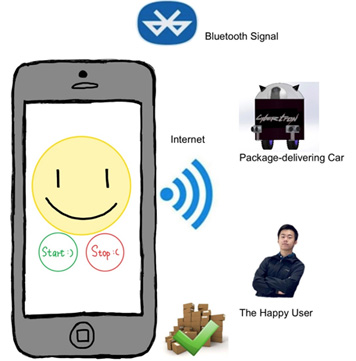
Student Projects
VG100

Personal Package-delivering Assistant
Instructors: Dr. Mian Li, Dr. Irene Wei
Team Members: Shuyu Zhan, Yuhao Li, Haohong Shang, Chang Li, Yan Ya
Project Video
Team Members

Team Members:
Shuyu Zhan, Yuhao Li, Haohong Shang, Chang Li, Yan Ya
Instructors:
Dr. Mian Li, Dr. Irene Wei
Project Description
Problem
To cope with the increasing need of the delivery service nowadays, the courier stations spring up in the colleges.However, students still bear much inconvenience when carrying numerous or large-scale of parcels from fixed stations to dormitories. We found that the existed solutions can’t meet the students’ requirement.
Concept Generation
Our project aims at building an automatic tracing car which can help students carry their parcels, so that they can liberate their hands when transporting the packages. In addition, the products will be put into use as public and self-help service, so the users are provided with the service at any time they want at relatively low cost.
Design Description
Our final solution is the automatic tracing cars which can hold enough parcels for students, and it’s operating state can be controlled by users’ mobile phone. The hardware part applies Bluetooth modules and cameras to track human figures, while the software part including an easy-operated app for users to start or stop the delivery service, and connection.

Fig. 1 The structure of the package-delivering car

Fig. 2 The software part
Modeling and Analysis
We employ Bluetooth communication and machine vision to realize accurate automatic tracking.
Two Bluetooth sensors which send signal out to let the user’s mobile phone get distance x and y are placed on the opposite sides of the car. For example, if 15Validation
Two Bluetooth sensors which send signal out to let the user’s mobile phone get distance x and y are placed on the opposite sides of the car. For example, if 15
We’ve tested the validation of Cybertron in the lab and it turned out to be workable. We let Cybertron follow a volunteer for about 30 seconds per test for 8 times.
According to our tests, Cybertron can carry up to about 5.1kg items while running. During our tests, it can successfully be connected to the APP in the cellphone and can adjust its speed and direction according to the location of the volunteer. Our system works well indoor, and we need more tests outdoor to calibrate the system.

Table 1: Test Data
Conclusion
The project solves “the last one kilometers” of the delivery service by introducing an automatic tracing car and the assisted mobile phone app. It’s featured as public self-service, so that students can be provided the service at any time with little expense. In addition, it can also minimize the cost by largely saving the human labor and being used by public. Our products works successfully, but still need the support of a recycling system to achieve the completeness.
Acknowledgement
Dr. Mian Li and Dr. Irene Wei from the UM-SJTU Joint Institute;
Teaching Assistants Fubo Qi, Hanyang Feng, Sheng Qiao, Xiaoxuan Wang for VG100 at UM-SJTU Joint Institute.
Teaching Assistants Fubo Qi, Hanyang Feng, Sheng Qiao, Xiaoxuan Wang for VG100 at UM-SJTU Joint Institute.
More project information, please contact: Marlene_L@sjtu.edu.cn
UM-SJTU JOINT INSTITUTE